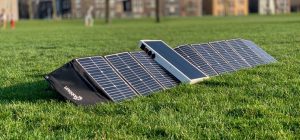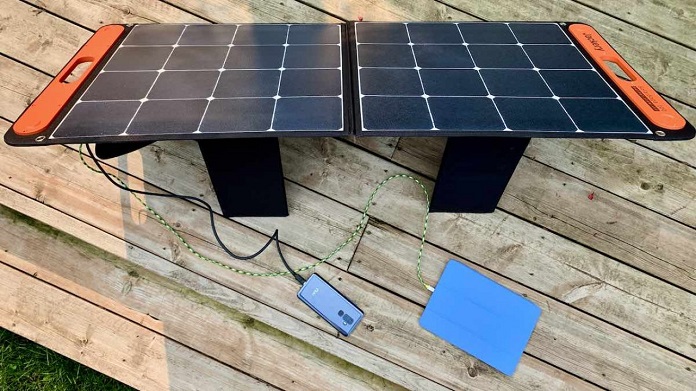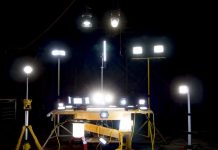
If you’re an avid camper, off roader or boondocker, few places on earth offer the same opportunities that Australia does.
Solar panels have been an essential bit of camping gear for some time now, and you’d be hard pressed to find anyone who spends any amount of time in the outback who doesn’t own at least one solar panel. But few things are more frustrating than setting up your site and realizing that your solar kit simply isn’t capable of producing enough power for the accessories you have, or worse, that there’s a fault somewhere in the system.
This can be twice as frustrating if your panels are attached to your vehicle. Regardless of the origin of the problem, the last thing you want to do is find yourself sitting in the dark (literally) without a reliable power source. This article can lead you in the right direction to ensure that it doesn’t happen.
From the beginning
The key to heading off a problem is making sure it doesn’t have a chance to start. That means, when you’re in the market to buy photovoltaic equipment, you only want a comprehensive camping or 4X4 solar kit with all the cabling, clamps and voltage regulation equipment to set up your campsite and be fully operational in a matter of minutes without breaking the bank. Ideally, any kit you purchase should also be:
- Sufficiently powered
- Perfectly portable
- Simply, solidly and domestically produced
There are kits on the Australian market that meet all these criteria: that stow away easily, requiring nothing more than unpacking to be fully operational, and are completely compatible with an entire range of lithium-ion, gel or lead-acid storage batteries.
Once the exception, these kits are now also capable of producing between 150W and 200W, and perfect for providing a sufficient source of renewable energy for lighting, refrigeration, as well as a laptop or similarly small devices.
Making renewable portable
Let’s face it, if you’re going camping, although your photovoltaics are essential pieces of equipment, you still don’t want them taking up more space than necessary. That’s true whether you’re talking about inside or outside your vehicle.
Even when external surface area is available, attaching photovoltaics to the outside of a vehicle may not be optimal unless specifically designed to be impact resistant, and the vehicle is parked in direct sunlight all day. Fortunately, three types of Australian-built panels have evolved that can be considered both tough and truly portable.
Solar Blankets

Solar blankets are made of banks of flexible photovoltaic cells attached to a canvas blanket and can found in 2×5 or 3×4 configurations. Ideal for positioning upright when in use and for neat storage away during transporting, a 200W blanket folds into a smart 350mm x 375mm package that’s thin enough to easily fit under most seats.
Solar Mats
Solar mats are constructed similar to solar blankets, consisting of three or four flexible photovoltaic cells that are attached to a heavy nylon blanket. Measuring 710mm x 530mm when folded, a 150W or 200W solar mat is man-portable, and folds and packs away easily, yet can be rigidly positioned when unfolded for maximum sunlight exposure.
Fixed Solar Panels
Fixed photovoltaics are the mainstay of renewable energy, but they’re not the awkward, clunky fixtures they used to be. Fixed panels weigh less, have lower profiles, are more aerodynamic than they’ve ever been, and are designed specifically to be attached to the roofs of campers, boats and 4WDs.
Measuring in at a slim 1320mm x 664mm, fixed panels are also more shock and impact resistant than previous generations of vehicular photovoltaics. In short, modern photovoltaic panels allow campers to stay off the grid a lot longer, and with a lot fewer headaches over reliable power.

Making renewable turnkey
A person shouldn’t have to be an electrical engineer to know how to set-up or troubleshoot their solar system which is why a 4wd solar panel setup should be as complete, and as solidly built as possible. No one wants to buy a system, only to realize that they still have to purchase an armful of additional materials to actually make it functional.
One of the biggest obstacles for campers who want to deploy with solar power is that, very often, the camper’s required to make some tough decisions about electricity and the compatibility of numerous components… which isn’t everyone’s strong suit.
When you purchase a turnkey system, you’re expecting more than just a set of panels. You shouldn’t have to go out and purchase additional hardware, and setup should be simple enough that you don’t need a degree in electrical engineering. If you can imagine a 4×4 solar panel kit that only includes four components, but still delivers maximum efficiency, rest assured they do exist and they will consist of:
- A portable, one-piece solar panel solution composed of monocrystalline cells
- A single PWM solar regulator
- A single power cable to connect the panel to the regulator
- A single battery cable to connect to storage batteries
And of course, you can expect any kit this comprehensive to also be perfectly scalable for upsizing with only a change of cabling needed to add additional panels to the system too. It’s the sign of a superb engineering product that’s meant to deliver power, not problems.

A powerful conclusion
There’s no shortage of solar options available, but a capable and reliable solar panel solution doesn’t have to be a budget, or back breaker. A superior designed 4×4 solar panel kit will meet those criteria, and it’ll be ready to pack up and go whenever you are.
At the end of the day, people take to the great outdoors to get away from the stress; and power generation should be the last thing you have to worry about while you’re out there. That’s why you won’t regret looking into a complete solution beforehand!















